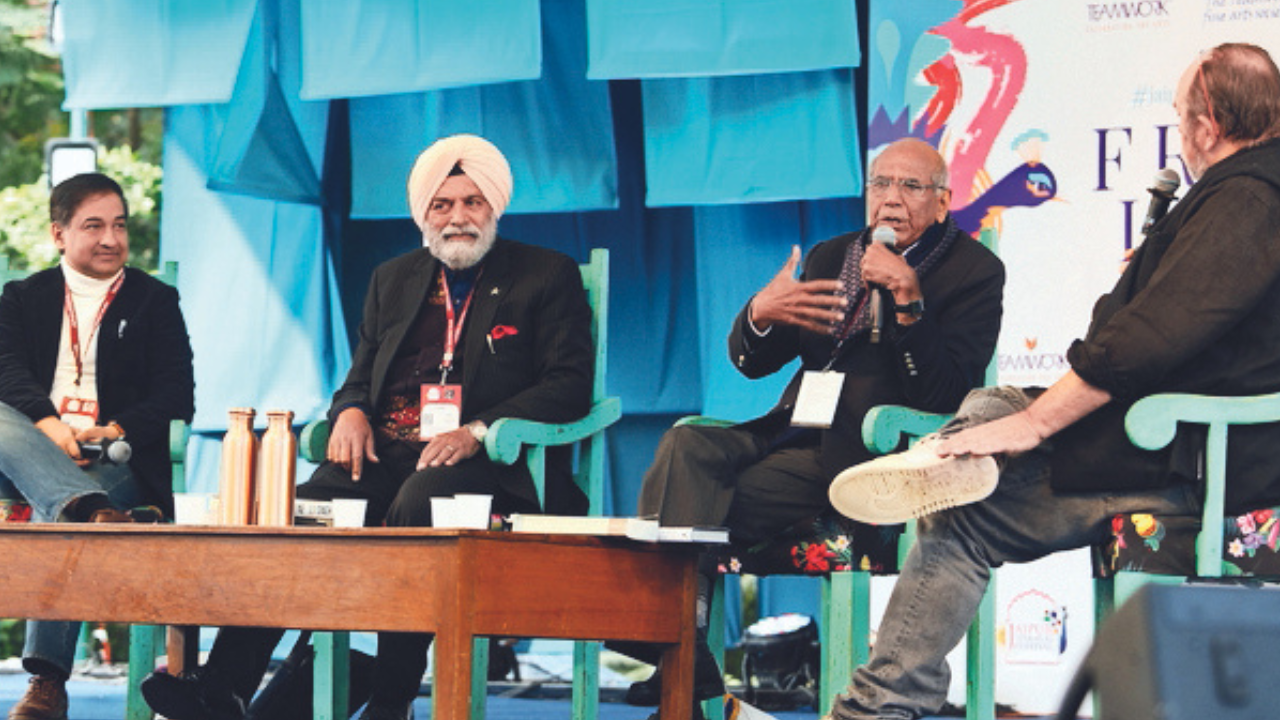Rajasthan
Hegemonistic China Facing ‘new India’: Former Army Chief Singh | Jaipur News
JAIPUR: Former Indian Army chief J J Singh on Saturday asserted that China faced a ‘new India’ at Doklam (2017), Galwan (2020-21) and Tawang (2022) unlike what it was in 1962 (Indo-China war).
Singh was speaking at a session “The Elephant and the Dragon: A Connected History” on the third day of the Jaipur Literature Festival (JLF).
Singh, who also served as governor of Arunachal Pradesh, stated that earlier Indian governments were naïve to the Chinese policy of hegemony in the region.
“The situation of the Indian Army is not the same as it was in 1962. I want to reassure you that they got bloody noses in Galwan Valley, they were made to stop in Doklam and similarly, they were told to go back to Twang valley. This is the New India they are facing and they must understand India is no longer the same,” said Singh, who has 40 years of studying on the China border.
Further sharing a bit of recent history between the two nations, he said, “Our government was very naive that till 1954 Chinese were allowed to carry their logistics through Kalimpong, Kolkata and Siliguri to Lhasa. As they have to cross from mainland China to Tibet, this was their preferred route to the dangers of the mountains and Khampa tribes who would make merry hell for anyone coming from the mainland in Tibet,” said Singh.
Explaining the border problem between the two countries, Singh said that the border was defined by the customs and traditions that this side of the main mountain range was between India and China.
“China is a country which says something and does something. They can’t be trusted. The accords signed between the countries say that they cannot have troops over 20,000. What they did in Galwan is brought in two to three divisions of their army.”
Expressing hope that India and China can get into a constructive engagement which is only through dialogue and discussions, he said the constructive relations can redefine the contours of the world.
Former foreign secretary Shyam Saran said that over the last 15 years major efforts have been made to boost the infrastructure to improve the accessibility of Line of Control. “Our military capabilities are sufficient to prevent any further ingress by the Chinese. It will be a different ball game if you have to evict the Chinese from the areas they have occupied,” said Saran.
Calling the news reports claiming that India lost it is of land to China in the past two years as a matter of difference of perception, he said, “There are territories which you have lost which is the whole of the Aksai Chin. It cannot be said that the Chinese have occupied land in recent years. But it is true that several areas which we use to patrol before, today the Indian patrol are blocked from places which they were going before is certainly true.”
Singh was speaking at a session “The Elephant and the Dragon: A Connected History” on the third day of the Jaipur Literature Festival (JLF).
Singh, who also served as governor of Arunachal Pradesh, stated that earlier Indian governments were naïve to the Chinese policy of hegemony in the region.
“The situation of the Indian Army is not the same as it was in 1962. I want to reassure you that they got bloody noses in Galwan Valley, they were made to stop in Doklam and similarly, they were told to go back to Twang valley. This is the New India they are facing and they must understand India is no longer the same,” said Singh, who has 40 years of studying on the China border.
Further sharing a bit of recent history between the two nations, he said, “Our government was very naive that till 1954 Chinese were allowed to carry their logistics through Kalimpong, Kolkata and Siliguri to Lhasa. As they have to cross from mainland China to Tibet, this was their preferred route to the dangers of the mountains and Khampa tribes who would make merry hell for anyone coming from the mainland in Tibet,” said Singh.
Explaining the border problem between the two countries, Singh said that the border was defined by the customs and traditions that this side of the main mountain range was between India and China.
“China is a country which says something and does something. They can’t be trusted. The accords signed between the countries say that they cannot have troops over 20,000. What they did in Galwan is brought in two to three divisions of their army.”
Expressing hope that India and China can get into a constructive engagement which is only through dialogue and discussions, he said the constructive relations can redefine the contours of the world.
Former foreign secretary Shyam Saran said that over the last 15 years major efforts have been made to boost the infrastructure to improve the accessibility of Line of Control. “Our military capabilities are sufficient to prevent any further ingress by the Chinese. It will be a different ball game if you have to evict the Chinese from the areas they have occupied,” said Saran.
Calling the news reports claiming that India lost it is of land to China in the past two years as a matter of difference of perception, he said, “There are territories which you have lost which is the whole of the Aksai Chin. It cannot be said that the Chinese have occupied land in recent years. But it is true that several areas which we use to patrol before, today the Indian patrol are blocked from places which they were going before is certainly true.”





